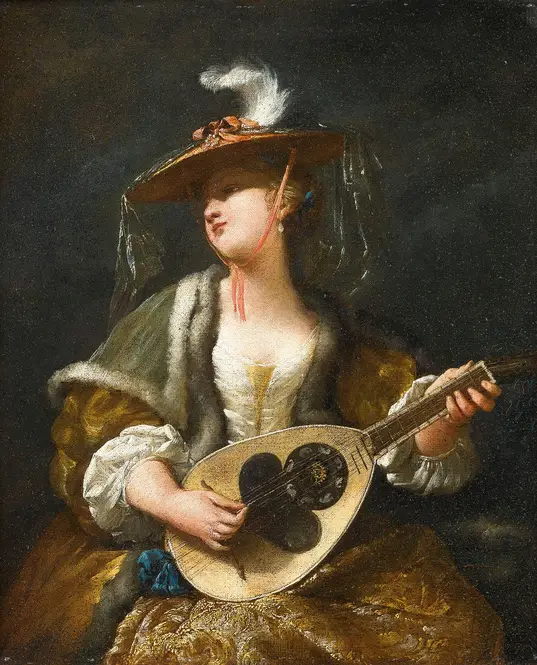




About the Artist
Master’s Palette
Reveal the unique color story behind each piece, helping you delve into the artistic essence, and spark boundless inspiration and imagination.

Bring the captivating colors to your project. Click to copy!
Artwork Story
Jean Barbault’s A Lady Playing A Mandolin captures a moment of quiet intimacy, where the delicate strumming of strings seems almost audible. The subject, dressed in flowing garments, leans slightly forward as if lost in the melody, her fingers poised gracefully over the instrument. Soft light bathes her face, highlighting the subtle play of emotions—perhaps contemplation or fleeting joy. The background dissolves into muted tones, drawing focus to her hands and the mandolin’s intricate carvings, suggesting both craftsmanship and the artist’s attention to detail.
There’s an air of spontaneity here, as though Barbault caught the scene mid-performance. The folds of the lady’s dress ripple with movement, contrasting with the stillness of her focused expression. It’s not just a portrait but a glimpse into 18th-century leisure, where music bridged private reflection and social connection. The painting’s warmth invites viewers to linger, imagining the notes hanging in the air long after the moment passes.


 (c. 1380-1390)-full.webp)
-full.webp)
-full.webp)
-full.webp)
-full.webp)
-full.webp)